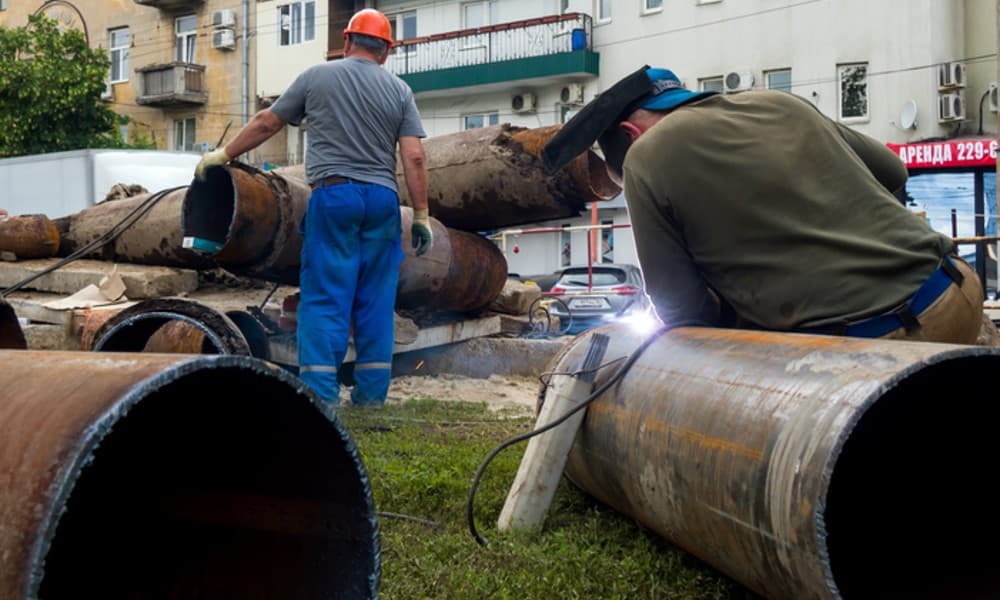Taking care of your property means keeping up with regular maintenance as well as making larger improvements
Key takeaways:
- Capital improvements and HOA maintenance differ in scale
- Capital improvements generally cost more money but can offer long-term financial benefits
- The money to pay for improvements comes from homeowners over a lengthy period
- Allocating this money can be challenging
Making capital improvements and keeping up with HOA maintenance are two of the core responsibilities of property management. While capital improvements increase a property’s value, HOA maintenance involves the repair and upkeep of existing features. When combined, these projects can help create a thriving community.
Because they differ vastly in scope, understanding the difference between capital improvements and HOA maintenance comes in handy when allocating resources in your annual budget. Read on to discover how HOA maintenance and capital improvements vary.
Defining capital improvement vs. HOA maintenance
HOA maintenance entails projects that cover the regular upkeep, repair, and replacement of your current assets. Consistent repairs help to maintain an asset’s condition. Regular maintenance is also pivotal in preventing further deterioration while guaranteeing specific standards of operation. Proactive maintenance ultimately yields significant savings.
HOA maintenance ensures that assets reach their intended lifespan, delivering a consistent return on investment. It usually involves seemingly minor projects, including:
- Replacing burned-out light bulbs
- Weekly pool cleaning
- Annual HVAC inspection, cleaning, and service
On the other hand, capital improvements refer to projects that aim to improve your assets’ value. Capital improvement projects are usually necessary when you want to enhance the quality of your community. These improvements can also increase your property’s useful life and even help you adapt an asset to a new purpose.
Of course, all of that benefit doesn’t come cheap. Most capital improvement projects cost $10,000 or more. But while that might seem like a huge expense, these improvement projects are vital for improving a homeowner’s quality of life, as well as their property values. Projects that classify as capital improvements include:
- Resurfacing/repaving roads
- Adding amenities like a new gazebo
- Repainting community structures
- Installing energy-efficient upgrades like tankless pool heaters
At face value, you could easily confuse these two projects, but they are considerably different. HOA maintenance projects aim to preserve an asset’s working condition while capital improvements aim to breathe new life into your assets.
What are the included fees?
Residents usually pay monthly HOA fees that finance both regular maintenance and capital improvements. Operating budgets typically cover HOA maintenance under Repairs & Maintenance, while an HOA reserve fund covers capital expenditures or improvements. The reserve fund also usually covers unexpected repairs and other large-scale projects.
Funding for capital improvements
A community’s success depends on how promptly you perform capital improvements. Remember that a property’s components will deteriorate even with regular maintenance. For example, a roof can serve you for up to 25 years with consistent maintenance and repairs. However, once its lifespan elapses, you’ll still need to replace the roof.
Where does the HOA get funds for these improvements? Again, it’s important to note that these large-scale projects can be extremely costly. Understanding an association’s financial accounts offers insights into how to source project funds.
The HOA relies on its operating and reserve funds to maintain its operations. The operating fund covers daily expenses, including maintenance and repairs. Homeowners associations then set aside some of their monthly incomes into a reserve fund, which comes in handy when emergency expenses or capital improvement projects arise.
Can an HOA get tax breaks on capital expenditures or improvements?
The government doesn’t exempt HOAs from filing annual tax returns. Fortunately, your maintenance and capital improvement projects might be tax deductible. Keep abreast with Section 162 of the Internal Revenue Code to understand the guidelines on deductible repairs and improvements.
Tax breaks offer an excellent avenue for saving money when you have upcoming capital improvement projects. For example, the federal government may offer tax breaks or other incentives for installing energy-efficient appliances or using green building materials.
Can you combine capital improvements with HOA maintenance?
While capital improvements aren’t the same thing as HOA maintenance, it is always helpful to strike a balance between the two. Completing these projects concurrently ensures that your assets maintain smooth and proper functionality.
First, an asset can easily reach its full potential with regular maintenance. However, you must continually assess the cost implications. If it becomes too expensive to maintain the asset, the prudent option will be to consider replacing it.
Slacking off on regular maintenance means that you might be forced to start capital improvement projects earlier than expected. You’ll end up experiencing difficulty if your reserve fund doesn’t have enough money.
On the other hand, a simple and inexpensive repair can often help you avoid costly capital improvements. Small leaks can be easy to fix, but if you overlook them, they can lead to major replacements.
Ultimately, you’ll enjoy significant savings when you combine capital improvement with regular HOA maintenance. Completing such projects improves the community’s quality of life and attracts new homebuyers. Try always to anticipate these projects so that you can fund them whenever necessary.
What happens when you encounter unexpected repair issues?
While you might put everything in place to maintain a regular maintenance schedule and plan ahead for capital improvements, unexpected emergencies will inevitably arise, so it’s best to be prepared. But how exactly do you go about doing that?
Partnering with a trusted HOA management company might be a good idea. The HOA manager can help you create protocols for handling different scenarios. An outside expert adds value to your asset management protocols, helping you minimize errors and enhance efficient practices.
Do you still have doubts about handling your regular maintenance and improvement projects? Let VendorSmart connect you with fully-vetted, compliant vendors. Explore our platform to find a suitable vendor to support your maintenance initiatives.
